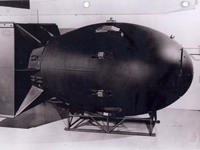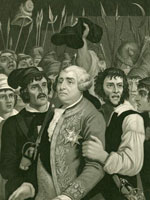There are lots of great resources on the Web for planning a unit on the origins of American government. A good place to start is the National Archives website, which has some excellent resources for teachers. For your purposes, the Teaching with Documents: Images of the American Revolution page is most relevant, while the American Revolution section gives background information, primary documents, teaching activities, and worksheets.
Another good resource for teachers is EDSITEment, a project of the National Endowment for the Humanities. Their Voices of the American Revolution page gathers resources from a wide variety of websites and includes different activities for the classroom. The Colonial Broadsides and the American Revolution page, though designed for middle school teachers, has resources that could be adapted for older students.
Also consider the colleges and universities that have participated in the Teaching American History program. Many of these schools have web pages where participants post materials and lesson plans. Fitchburg State College, for instance, offers teacher-created plans on the American Revolution that you can browse.
The National Park Service provides great resources for history and social studies teachers. Their Teacher’s Guide to the American Revolution includes five separate lessons as well as primary source documents. Though sometimes lengthy, these units are packed with interesting details and materials.
A peerless source of classroom materials is the Public Broadcasting System. Among PBS web pages that focus on the American Revolution is Rediscovering George Washington, which includes a unit on Washington as military leader during the war for independence. Another excellent site is Africans in America, which comes with a teacher’s guide, complete with lessons, questions, activities, and resources.
Though it doesn't feature lesson plans, TeacherServe, a project of the National Humanities Center, can guide you to useful resources that focus on the Revolution and the Colonial era. Their section on religion, Divining America: Religion in American History, contains essays that offer different perspectives on the importance of religion during the period.
This is a mere sampling of what's out there on the origins of our democracy. Good luck with your unit planning!



